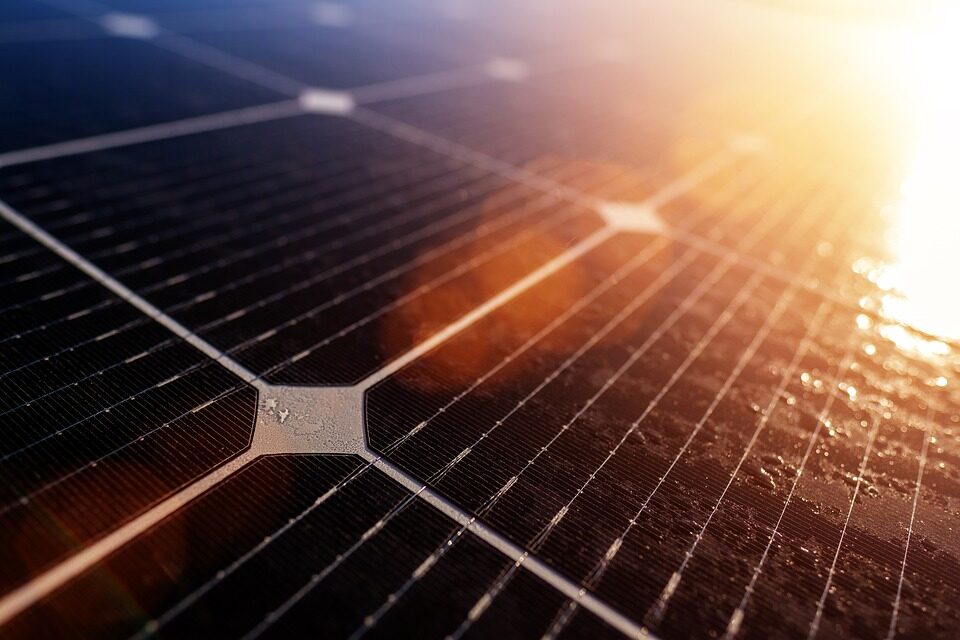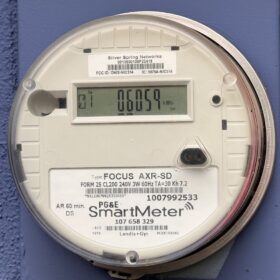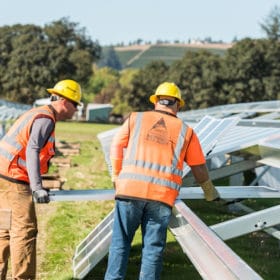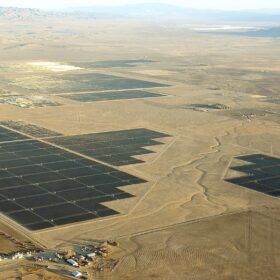North America’s $14 billion large-scale solar industry is a “sitting duck” with glass panels sitting in fields with “little to no protection,” said VDE Americas, a technical due-diligence and risk-mitigation service provider.
VDE said industry hail damage insurance claims represent only 2% of all claims filed but comprise over 50% of the total costs. The risk is large, but the industry has developed solutions to address and mitigate this increasingly relevant risk.
“Climate change appears to be impacting both the frequency and severity of hail events,” Brian Grenko, CEO and president of VDE Americas, told pv magazine USA. “As temperatures warm, the atmosphere holds more moisture, allowing for stronger updrafts and the formation of larger hailstones.”
Grenko said utility-scale solar projects located in the “hail alley” region extending from Texas north to the Dakotas are particularly vulnerable to baseball-sized hailstones.

VDE announced it teamed up with climate insurance provider kWh Analytics to create a checklist tool that enables project developers to quantify risks, report mitigation strategies, and achieve lower project premiums.
The hail risk tool is a form for developers to fill out project information such as its location, hail alert systems used, on-site staffing, and components used such as PV module models and racking/tracker models, among other data. The form is a tool to help insurance underwriters assess risk and enhance loss prevention practices. VDE’s tool and a hail best practices form can be found here.

Image: VDE Americas
VDE said insurance claims for utility-scale solar projects damaged by hail average roughly $58 million per claim. However, there are many ways to invest in the resilience of a solar project.
(Read: “Actionable insights to safeguard solar projects from hail damage”)
pv magazine USA interviewed Brian Grenko, chief executive and president of VDE Americas about these strategies:
pv magazine USA: Do most major single-axis solar tracker providers have a hail stow feature?
BG: “Fortunately, hail-stow features are increasingly becoming a standard feature for most single-axis solar trackers. We always recommend project owners confirm hail stow functionality, settings, protocols and priorities (e.g. wind vs. hail) before making purchasing decisions.”
pv magazine USA: How does the increase in cost for including hail stow features compare to the $58.4 million per solar hail claim?
BG: “Trackers that are designed to stow at maximum tilt angles may be slightly more expensive relative to those that stow flat because more steel is typically required to ensure a resilient design. The operational costs associated with implementing best practices (e.g. weather alerts, stow drills, etc.) are negligible compared to other maintenance costs. These small investments significantly reduce the likelihood of having to make an insurance claim.”
pv magazine USA: Are hail-resistant solar modules showing strong performance under hailstorms?
BG: “Absolutely. Data from our ‘Verified by VDE’ program reveals that hail-resistant PV modules have significant advantages compared to PV modules without such design features.
We recently published a case study discussing impacts from a ‘500-year’ hailstorm in Fort Bend County, Texas, affecting a cluster of installed solar projects in close proximity to one another. One project where hail stow protocols were not implemented (Fighting Jays) realized several million dollars in estimated losses.
While the three other projects we surveyed (Cutlass I, Cutlass II and Old 300) were exposed to similar storm conditions, two of those projects sustained no measurable damage, and the third project experienced only minimal damage (resulting from an isolated tracker motor failure), because those projects were properly stowed prior to the storm event.”
pv magazine USA: Do projects that cannot hail-stow like fixed solar carports come with higher insurance premiums?
BG: “Generally speaking, yes, although it depends on things like project location and who the insurance provider is. Insurance premiums are most typically higher for projects that cannot implement hail stow protocols.”
pv magazine USA: What other risks are most important to prepare for, especially in non-hail prone regions? (Wind, flood, snow, etc.)
BG: “It’s important to remember that PV systems are often financed on the assumption of a 35- to 40-year useful life. This requires that systems are not only designed to withstand wind, hail, flood, snow or frost heave, but also consider longer-term impacts from things soil corrosion, vegetation management, and planned operations and maintenance activities. As a leading technical advisory and independent engineering firm, we take a holistic approach to identifying and mitigating these and other technical risks, which can be highly specific to each project.”
This content is protected by copyright and may not be reused. If you want to cooperate with us and would like to reuse some of our content, please contact: editors@pv-magazine.com.









By submitting this form you agree to pv magazine using your data for the purposes of publishing your comment.
Your personal data will only be disclosed or otherwise transmitted to third parties for the purposes of spam filtering or if this is necessary for technical maintenance of the website. Any other transfer to third parties will not take place unless this is justified on the basis of applicable data protection regulations or if pv magazine is legally obliged to do so.
You may revoke this consent at any time with effect for the future, in which case your personal data will be deleted immediately. Otherwise, your data will be deleted if pv magazine has processed your request or the purpose of data storage is fulfilled.
Further information on data privacy can be found in our Data Protection Policy.